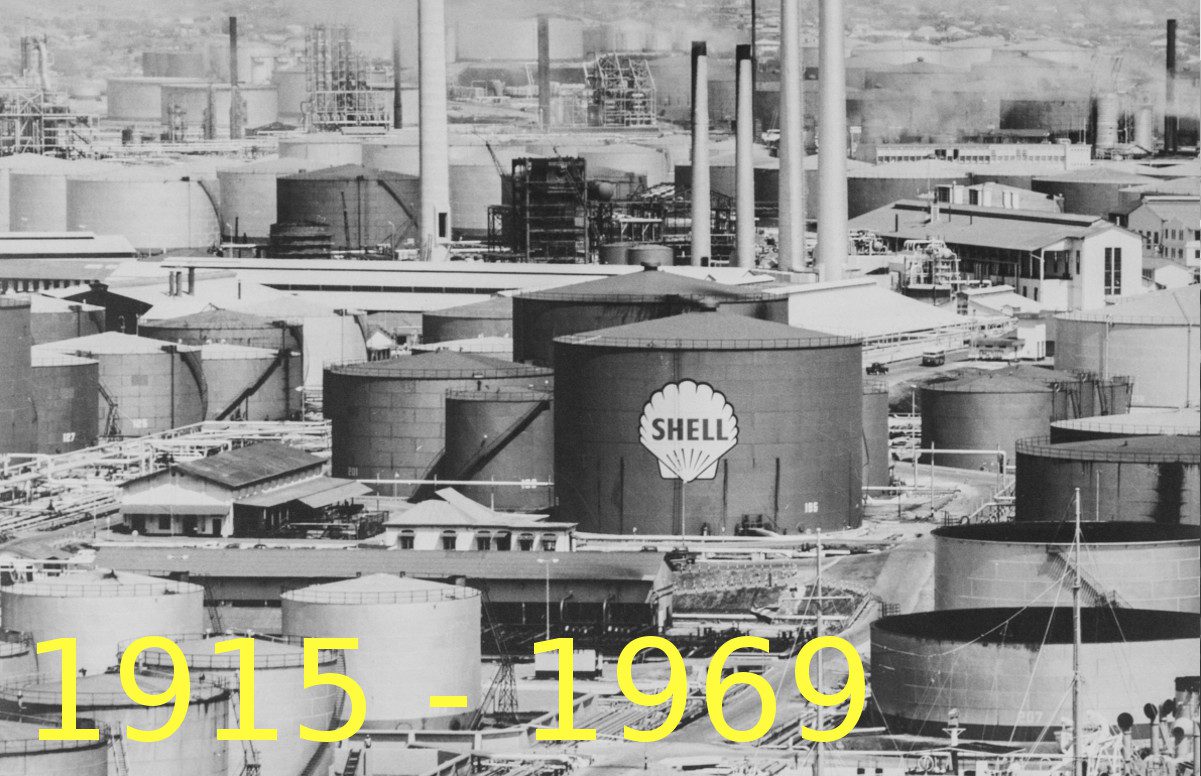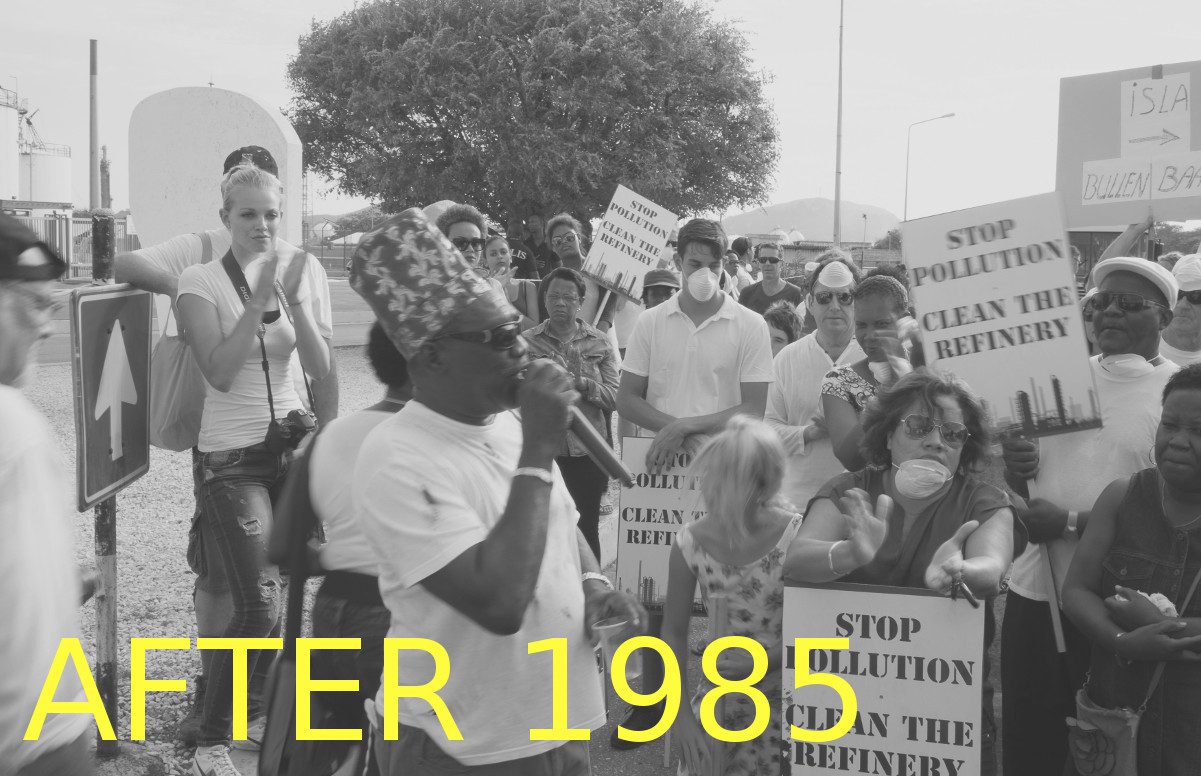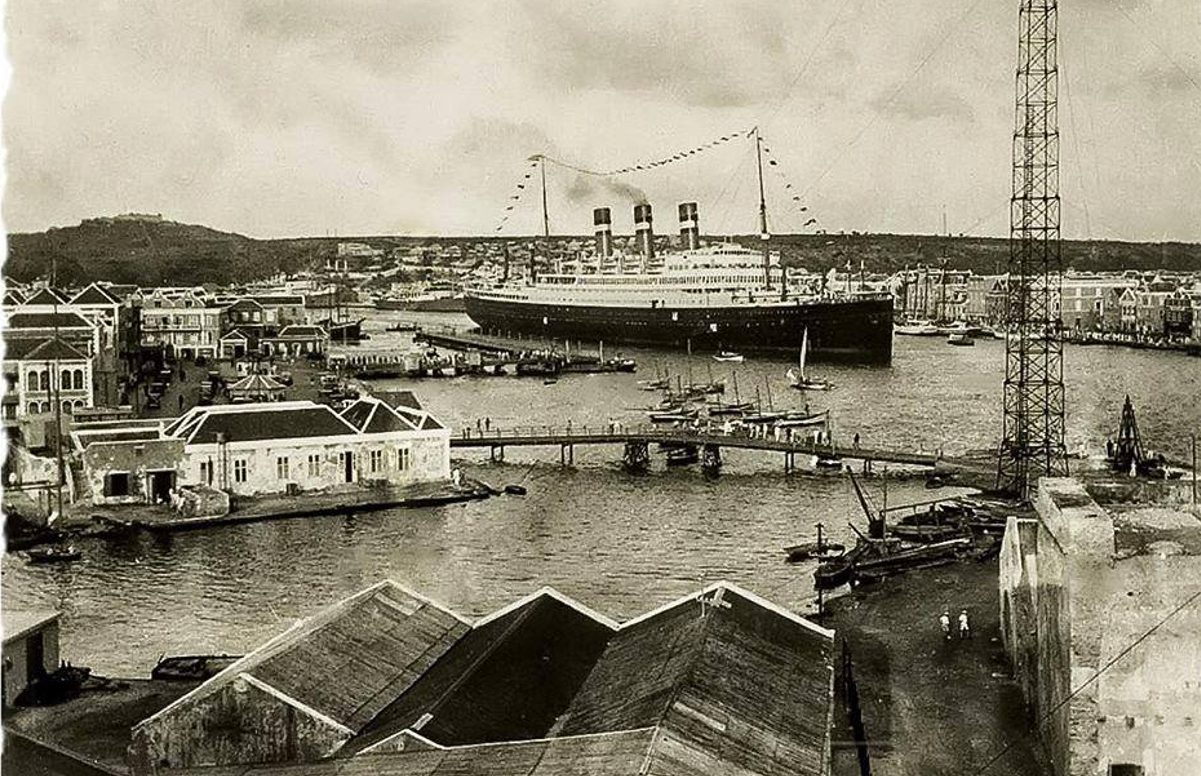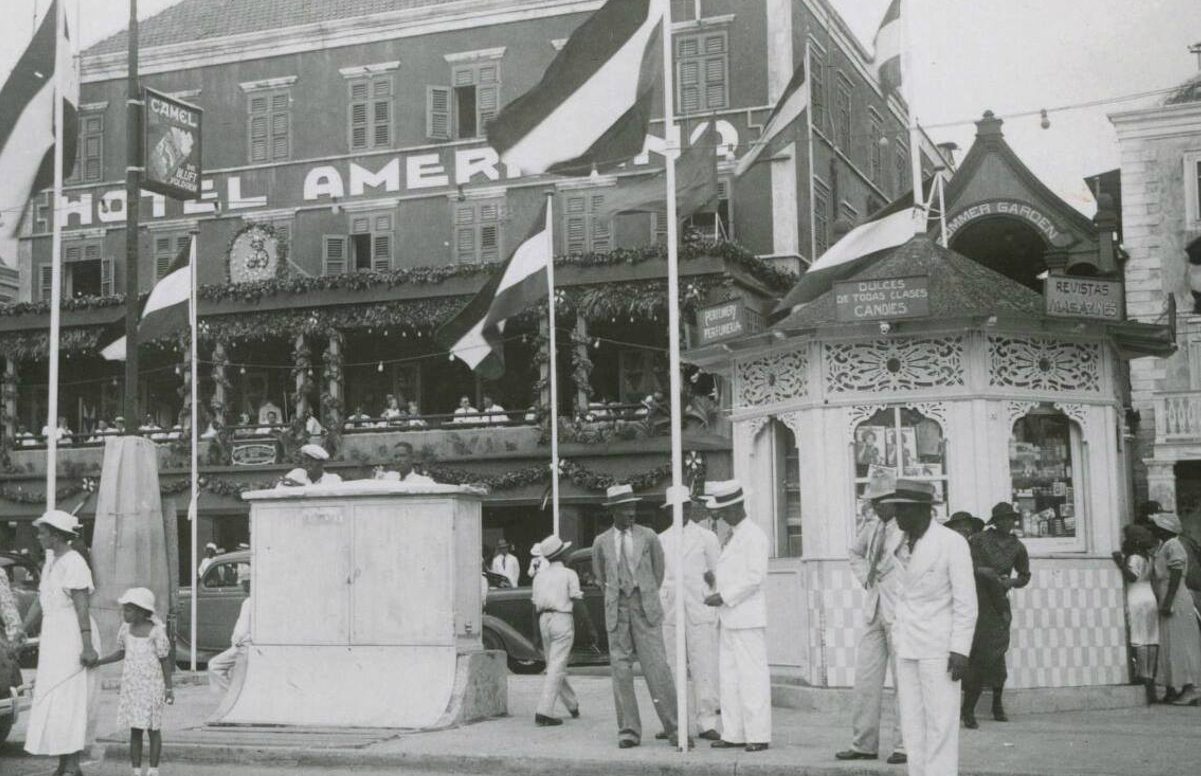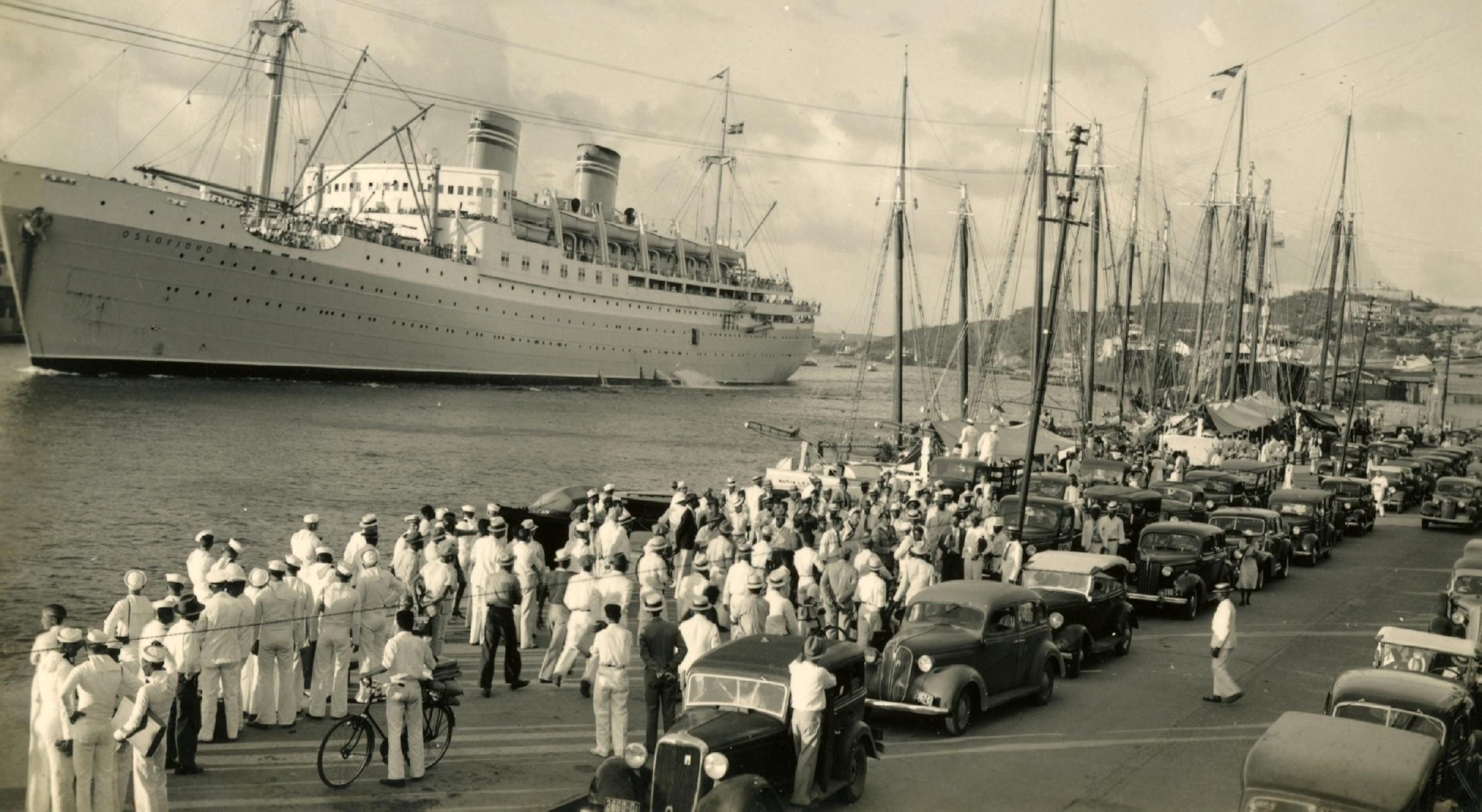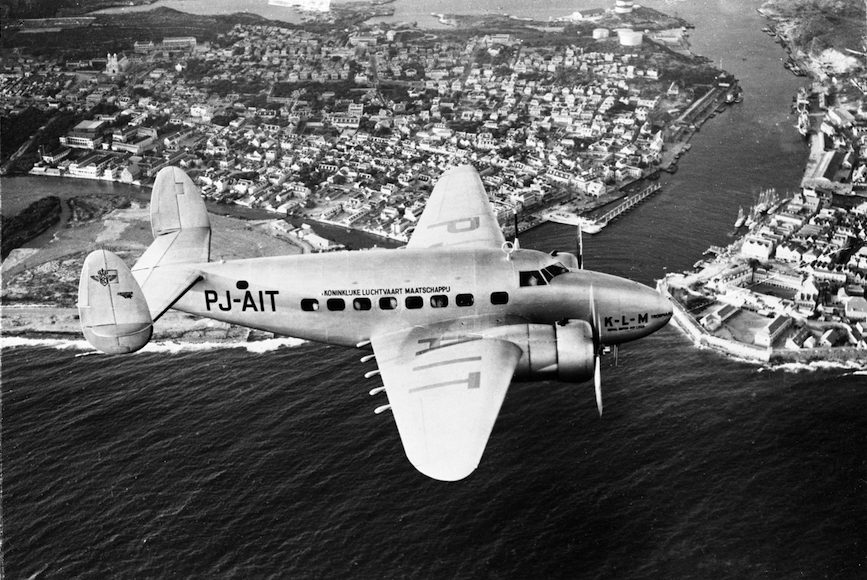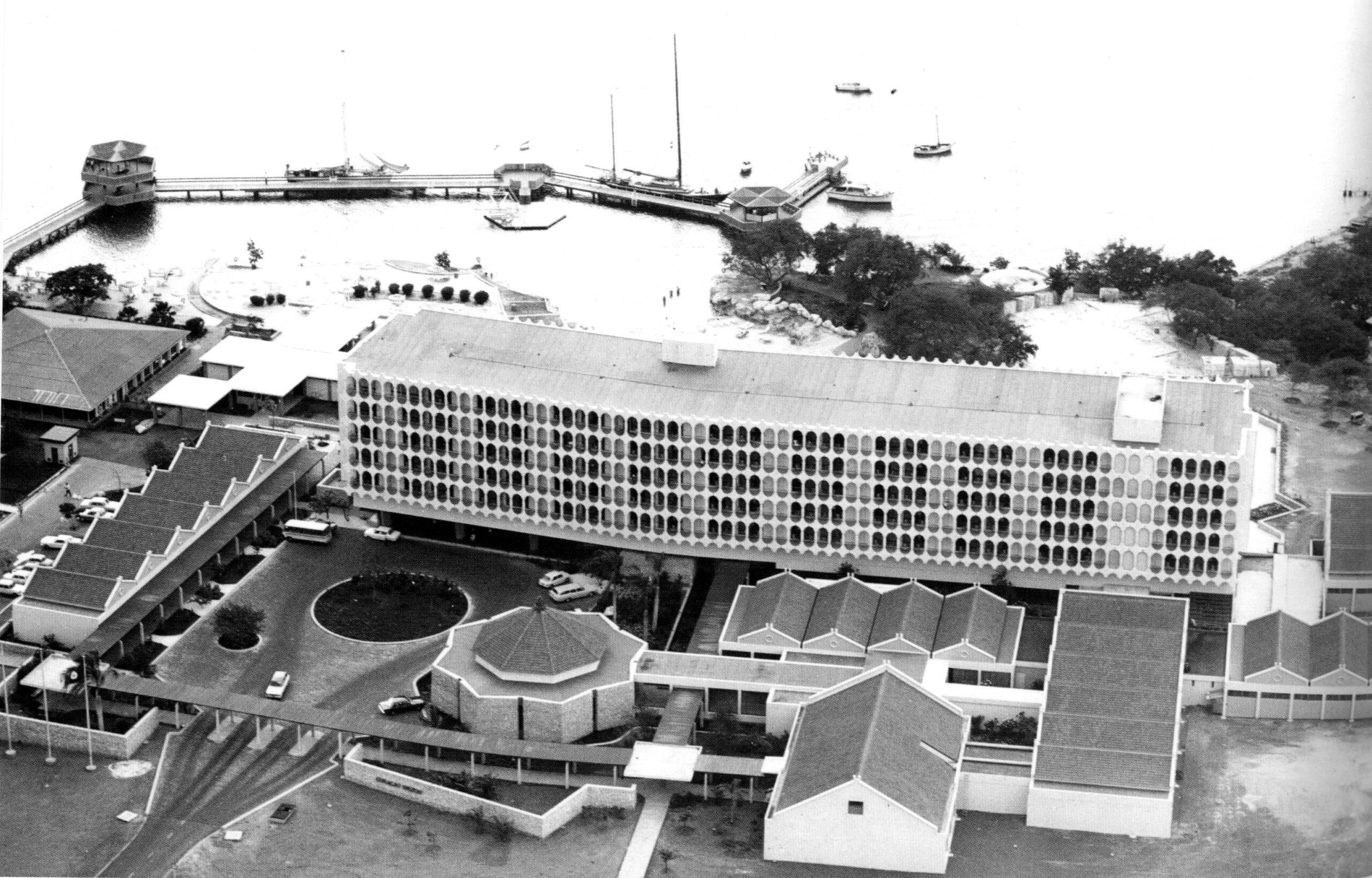
Isla den Nos Bida
100 years Refinery in Curaçao – 100 aña Refineria na Kòrsou
Exhibition
1915 – 1969
Tourism came early to Curaçao. Even prior to the establishment of the refinery, in February 1901, the German yacht Prinzessin Victoria Louis reached Curaçao with 200 passengers as part of a cruise out of New York. The ship returned in subsequent years, and each time a small booklet was provided by the shipping agent outlining useful information about the island, including the rental of a carriage for 2 guilders an hour to visit the Hato caves or go on a hunting expedition at Groot St. Joris.
After the refinery was built, traffic of steamships and trade oriented shipping lines grew considerably, making Curacao a sure stop for most ships in the region. This enhanced the development of early cruise tourism. In 1928, fifteen cruise ships docked in Curaçao, carrying 350 to 400 passengers each. Most cruises departed from New York, arriving on Curaçao from Trinidad and La Guaira in Venezuela.
However, the tourist experience on the island itself was limited. “Most tourists don’t get beyond the typical Handelskade, the smoke from the Isla-chimneys and the beautiful eyes and the pomade enhanced hair partition of a polite British-West Indian,” a visitor wrote in 1934. That year, 33 cruise ships anchored, bringing some 15.000 passengers. For tourists, Curaçao had become a shopping center with specialty stores as jewelers Spritzer & Fuhrmann, established in 1927, but also with more and general retail stores selling perfume, alcohol, silk and exotic articles at low prices. The largest cruise ship arriving in Curaçao before World War II was the Statendam, carrying 880 passengers whom collectively bought 325 crates of distilled liquor, no less than four bottles each.
At that time, the hotel industry was still in its infancy and lacked hygiene. One of the most prominent hotels of the time was Hotel Americano, located across from the pontoon Emmabridge at Brionplein in Otrobanda. However, while Hotel Americano was a landmark with a steady clientele, big time tourism, as envisioned by under the slogan “Curaçao, the West Indian sea side resort. A fully achievable future!”, wouldn’t arrive until the development of the airline industry with the Antillean Airlines (ALM) in 1964.
This became a reality after World War II in 1945. Four years later, Dr. Gungu Maal converted his Thelma clinic into the Avila Hotel, which opened on February 1, 1949 as Curaçao’s first seaside hotel. Meanwhile, the government tried to attract foreign investment in the tourism sector by passing the tax shelter law in 1953, allowing the provision to grant hotels a so-called tax holiday for a maximum of 11 years.
In 1957, Hotel Curaçao Intercontinental opened its doors. Built on the historic walls of the maritime Fort Amsterdam in Punda, the hotel linked a government center with the emerging hotel sector in an unusual way. In 1967, the Hilton Hotel opened as the first hotel in the Piscadera area. This hotel was designed by the architectural firm Toro-Ferrer from Puerto Rico, in collaboration with Curaçaoan architect Ben Smit. With the opening of the Hilton Hotel in the late 1960s, tourism arrived on Curaçao as a growing pillar of the economy.


